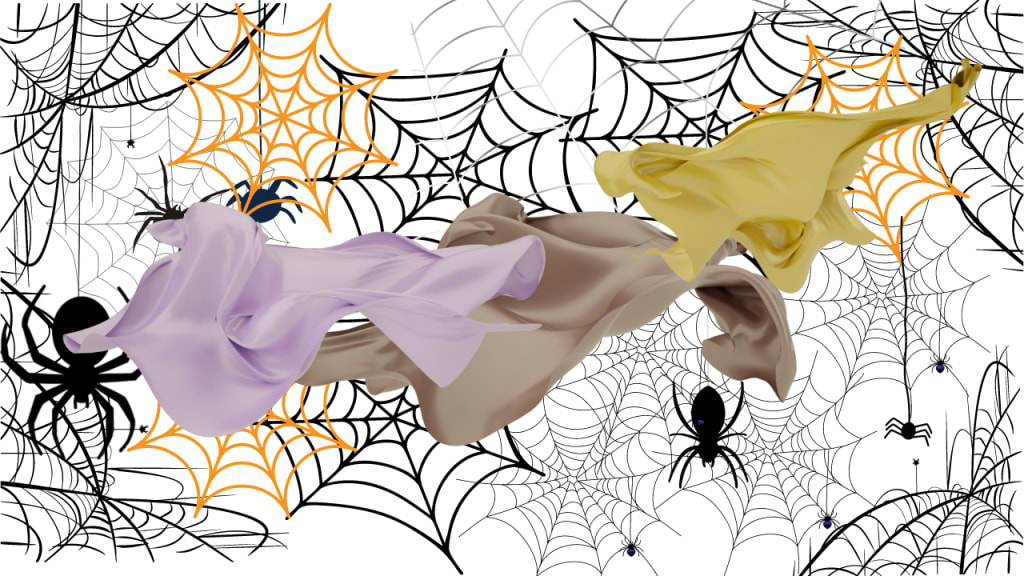"Unraveling the Silk Symphony: Nature's Ingenious Blueprint for Spider Silk and Its Revolutionary Potential"
"From Madagascar's Highlands to High-Tech Applications – Exploring the Extraordinary Journey of Spider Silk, a Biomaterial with Strength, Versatility, and Endless Possibilities"

In a remarkable feat spanning three years, a team of around 100 individuals in the highlands of Madagascar undertook the monumental task of creating the largest pieces of fabric ever made from spider silk. This extraordinary endeavor utilized silk produced by 1.2 million golden orb-weaver spiders, each yielding 30 to 50 meters of precious yellow thread. The resulting cape and wrap, a true masterpiece, were carefully woven before the spiders were released back into the wild.
The question arises: Why go to such lengths to create something from such an unusual and challenging material? The answer lies in the seemingly magical properties of spider silk, a substance that has fascinated humans for millennia. Ancient Greeks used spider webs to treat wounds, and traditional hunters in the South Pacific utilized spider silk for fishing, where its strength prevented fish from tearing through the strands caught in their serrated teeth.
Spider silk, known for its versatility, biodegradability, and strength, has become the focus of geneticists, biochemists, and material scientists aiming to unravel its mysteries. This natural material, more flexible than man-made nylon and stronger than steel on a per-weight basis, has captivated researchers seeking to harness its unique properties for various applications.
The story of spider silk traces back to the earliest known proto-spiders, which emerged around 380 million years ago during the Devonian period. These early spiders had spinnerets in their abdomens, producing silk used for various purposes, such as covering eggs or lining tunnels. Over time, spiders with spinnerets at the end of their abdomen evolved, allowing for more intricate silk creations.
Among the approximately 45,000 spider species, about 12,500 are orb-weavers, known for their wheel-shaped webs. Silk production begins in a spider's silk glands, where liquid silk travels down the ducts to the spinnerets at the rear of the abdomen. Spinnerets then transform the liquid silk into solid fibers.
Spider silk comprises different types, with dragline silk being the most widely studied. This silk, also known as the spider's lifeline, provides a combination of durability, strength, and elasticity. The silk's unique properties result from the combination of two proteins, spidroin 1 and spidroin 2, each containing both stretchable and crystalline regions.
Comparisons between spider silk and steel often highlight tensile strength, measured in pascals. While spider silk may not match steel in all aspects, its tensile strength can rival or even surpass certain types of steel. The density of spider silk is approximately 1.6 times lower than that of steel, making it exceptionally strong for its weight.
Spider silk's ability to stretch and deform without breaking, known as its pliability, contributes to its durability. Its high performance in the stress-strain curve surpasses materials like Kevlar. The combination of strength, flexibility, and lightness in spider silk makes it a crucial element for the survival of spiders in their natural environment.
Despite its incredible properties, the mass production of spider silk faces significant challenges. Attempts to farm spiders at scale have proven nearly impossible due to their cannibalistic nature. Alternative methods, such as genetically modifying host organisms, have been explored. One approach involves using goats to produce spider silk proteins in their milk, while another focuses on genetically modified bacteria.
In recent breakthroughs, genetically modified bacteria have shown promise in producing large spider silk proteins. This method involves adding a repeating sequence to the silk DNA, prompting a chemical reaction that fuses proteins together, creating larger, more robust proteins. Although challenges remain in mimicking the natural spinning process, advancements in artificial spinning bring us closer to replicating spider silk's extraordinary qualities.
While challenges persist in mass-producing spider silk, the potential applications are vast. Collaborations between companies like AMSilk and Adidas have explored creating concept sneakers, and Omega has developed a special edition spider silk watch strap. Airbus is investigating its use in aviation, envisioning a role similar to that of carbon fiber.
In conclusion, the story of spider silk unfolds as one of nature's most remarkable innovations. By studying nature's ingenious solutions, scientists and researchers find inspiration for solving some of our toughest challenges. Bugs, often overlooked or disliked, prove to be master engineers, offering insights into novel approaches for materials, medicine, and even flight. The heebie-jeebie factor aside, bugs hold the key to unlocking nature's ingenious solutions, reminding us that innovation often lies in the smallest and seemingly least appealing creatures.





Comments
There are no comments for this story
Be the first to respond and start the conversation.